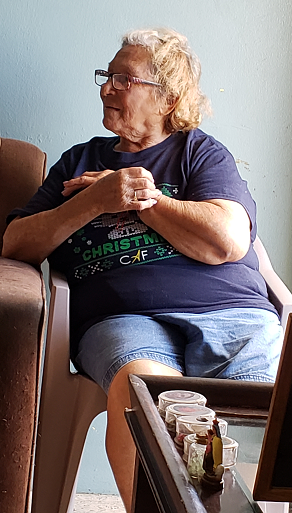Last Updated on March 27, 2023
COLMADOS
In Puerto Rico, a “colmado” is a conveniently located little store. Canned foods like beans and tomatoes, soups and fruit cocktail are stocked in colmados. Bags of rice, soft drinks, toiletries, and cigarettes are also common inventory, as well as a vast variety of other products.
Back in the 50’s, as the island of Puerto Rico was beginning to experience its own baby boom, the town of Arecibo was bustling and thriving. A new street, long and narrow, was dug and paved, and although it was given a proper name, everyone called it La Calle Nueva (the New Street). It is still referred to as Calle Nueva.
Luis Vega, a young WW II vet, opened a colmado on Calle Nueva. He and his wife Maria lived in the apartment above the colmado. Luis Vega was old school and liked knowing that his wife Maria was right upstairs, cooking and raising their family which, over time, grew to five children. His first child was named Luisito. Luis nicknamed the baby “Macho.”
Luis Vega’s colmado quickly became a flourishing business, popular with all the women, men, and children who lived within walking distance. If a customer was short on cash, Luis gladly extended credit, keeping a tally and accepting payment at the end of the month. He became friends with his customers, learning about their lives as they learned about his. He was a constant presence on Calle Nueva, a symbol of reliability to everyone, a trustworthy confidante to some. Indeed, in any emergency situation, Luis Vega could be depended on to help out, even occasionally transporting people to the nearby hospital. His name became well-known throughout Arecibo, especially when he sponsored the town’s baseball team, Los Lobos. Luis Vega became the town’s unofficial mayor.
Gradually, his successful retail operation expanded to incorporate a wholesale operation which, in turn, eventually became his primary focus. In fact, retail activity throughout the town was beginning to decline as shopping centers and malls were appearing on the outskirts, and new generations were settling there and shopping there. Meanwhile, Luis Vega’s sons matured and learned the family business. And so it continued for decades. Luis Vega died about 10 years ago.
Besides serving as a convenient little store, a colmado is also a social gathering place where news about people and events is exchanged. In due course, it may become the virtual repository of important information, the living memory of the people who have passed through and the words that have been spoken there…as long as a keeper remains on site.
On our recent trip to Puerto Rico, Erick and I stayed in Arecibo, his home town. We were intent on finding certain friends from his past, but without benefit of a white pages directory or a Google search engine or even functioning cell phones, our only option was to wade directly into the middle, hoping that something would emerge – a stray clue, a familiar (albeit older) face, a chance encounter with someone who might know someone else who might know something. We parked on Calle Nueva and started up the hill with heat from the morning sun on our backs. Just a few pedestrians passed by. At least half a dozen cats were loitering in front of Luis Vega’s old colmado. We peered into the hazy front window and could see the stacks of cartons ready for delivery. Within seconds Macho, grinning broadly, pushed open the front door and greeted Erick (whom he immediately recognized) with booming voice, exuberance, and hugs.
For an hour, they recalled old memories and shared more recent news, alternately laughing and verging on tears, with Luisito detailing histories both personal and community-wide. He did help us in our search for specific individuals. Paula, now 93, is living in a nearby lovely old Catholic home for elderly people. Information about Georgie could be obtained from a guy named Caniacos who owns an auto glass repair shop which could be found if you go down 129 and take a right at the convent. Gilberto died a year or two ago, but his mother is still alive. And even though she is gone, we all had to talk about Carmen Alicia, the unconventional, free-thinking, independent artist who rescued stray cats and dogs, who literally fed homeless people, who was always game for an adventure. Luisito was with her as she lay dying. He had always been attracted to her. “If only she had been 20 years younger,” he lamented.

Doña Maria Vega
Luisito describes his own home as a “castle on a hill” – a big, modern house built on the side of a mountain. He lives there with his family, but he has told his wife that he will want to die on Calle Nueva.
Before proceeding with our day, we visited Luisito’s mother, Doña Maria, now in her 80’s, still living in the apartment up the stairs. She is bright-eyed, and she clearly remembered Erick. They chatted while I watched the caged parakeet on her balcony overlooking Luis Vega’s old colmado.
Julie Helms
